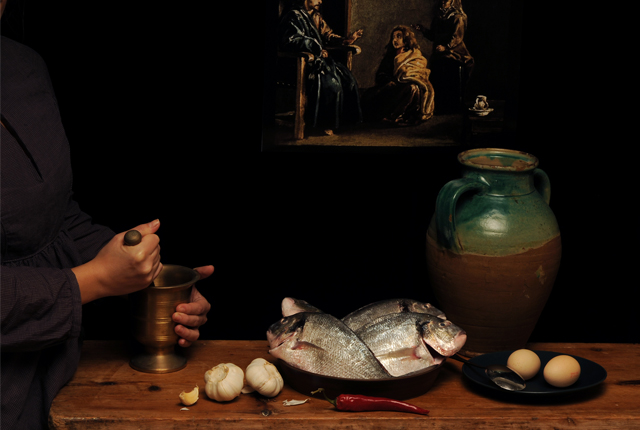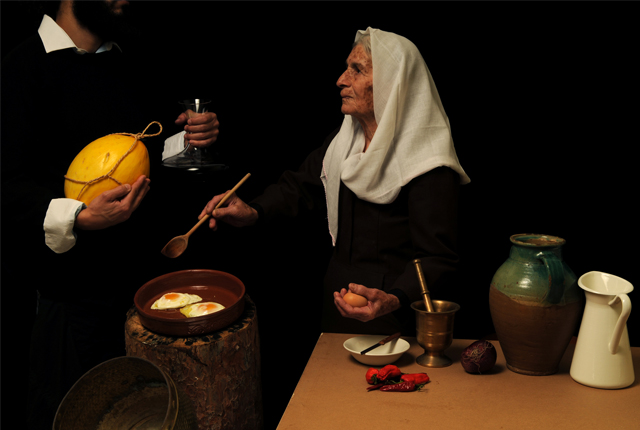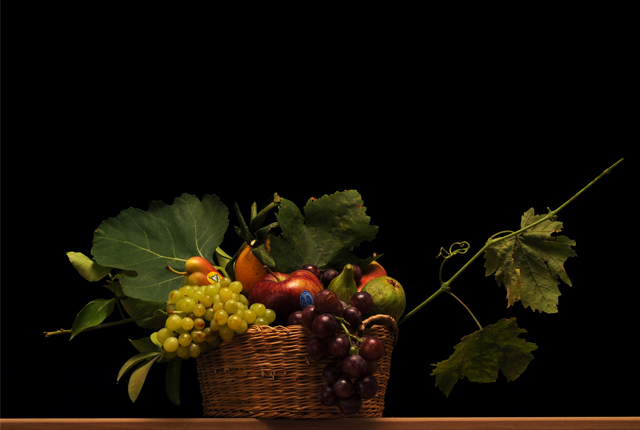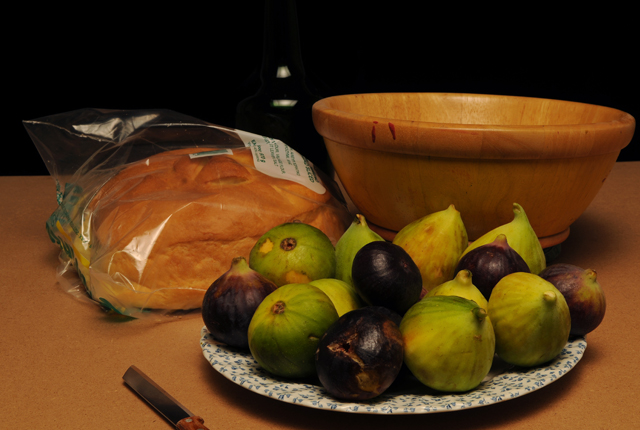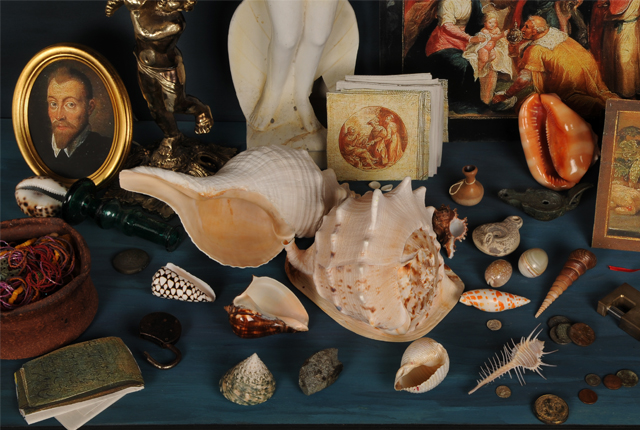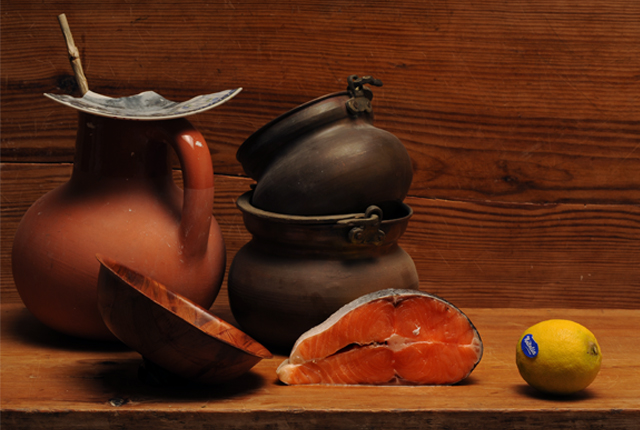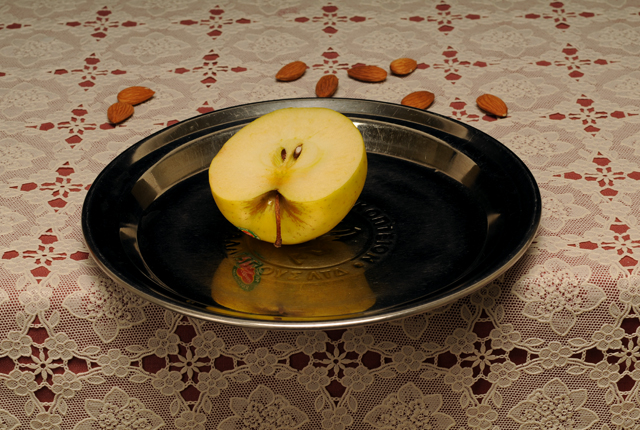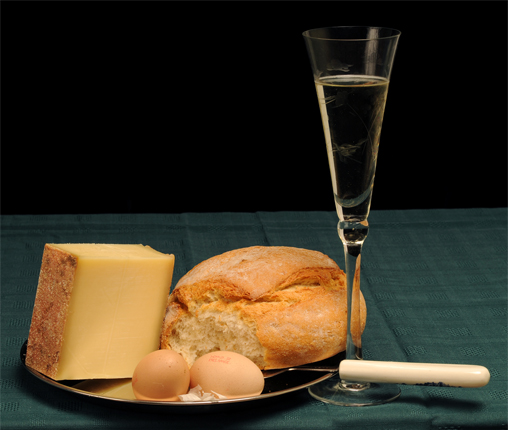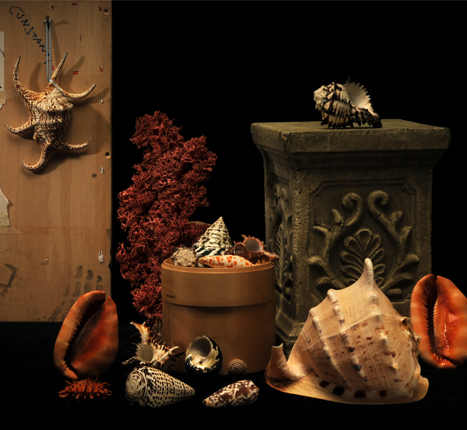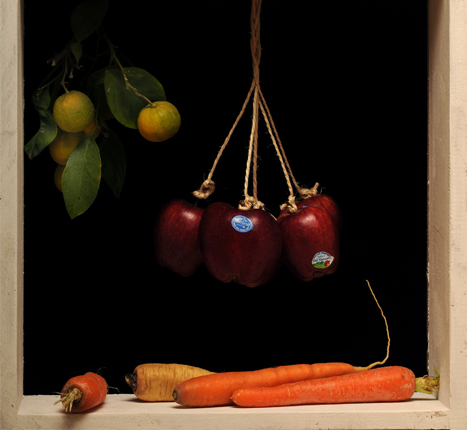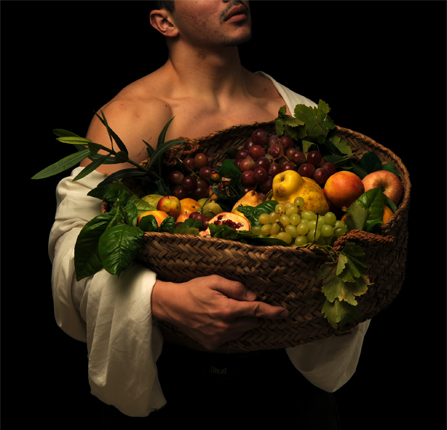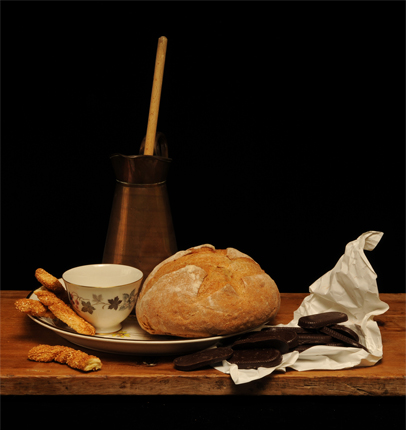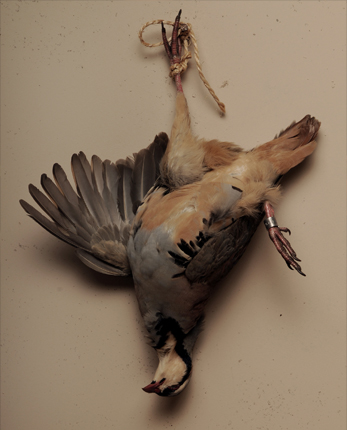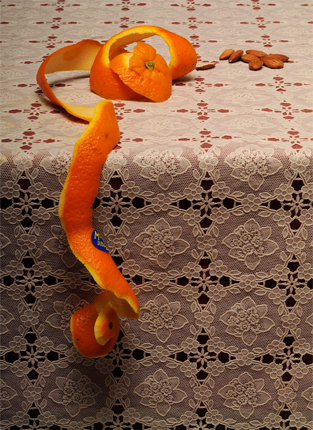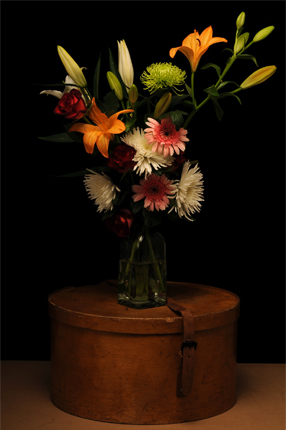Still life
C-type photography, 2010-2012
Marianna Constanti revisits Renaissance masters, some of the finest Spanish, Italian, French, Flemish and Dutch still life painters of all time and she rereads them in a totally novel perspective through her photographic lens. The list of those she pays homage to includes Diego Velásquez, Juan Sanchez Cotan, Francisco de Zurbarán, Luis Meléndez, Luis Egidio Meléndez, Michelangelo Merisi da Caravaggio, Jacques Linard, Jean-Baptiste-Siméon Chardin, Frans Francken II, Floris van Dijck and Jan Baptist Weenix.
Her reminiscences of supreme still lifes are meticulously staged photographic tableaux with present day objects, flowers and dead game, and with living personae as her sitters, (namely her grandmother, friends and even her own homodiegetic self, assuming the role of a faint human presence) depicted half-length and non-dramatic.
The artist’s complete technical competence transposes animate and inanimate figures into a different historical epoch and produces forms that stand out against a plain, dark or muted surrounding space, with a physical prowess, observed in the painters under study. Moreover, her manipulation of light attains an atmospheric unity between foreground and background, bringing about a striking affinity with the models at hand.
Marianna Constanti, however, goes far beyond the aesthetic achievement of infusing, even without the great benefit of texture, that same expressive realism of exquisite painting into photography, by taking up a critical stance on crucial issues, such as the loss of personal identity in an increasingly and frighteningly globalised culture, abnegating individuality with stereotypes of behaviour and lifestyle.
Subtle or overt satirical and ironic interpolations crop up in domestic settings with a late medieval verisimilitude, such as a Johny Walker advertising glass or a gift-tray, promoting G. Charalambous Cypriot Coffee Roasters, mass-production and over-consumption articles, such as IKEA mugs, jugs or wooden boxes, kitsch plastic table-covers, tourist attraction items, sold both at souvenir stores and local antique shops, traditional decorative copper pots and ceramic bowls, replicas of classical and hellenistic designs, reproductions of great works of art, cheap corks, strings of beads and shells from all the oceans of the world.
Leaping over temporal, spatial and geographical differences, she reconciles elements of diverse eras, introducing into 16th, 17th and 18th century interiors vacuum packed portions of salmon, bread and cheese, free-range eggs, stamped with dates of expiry and imported fruit with stickers of origin, as in her recreation of works by Velásquez, Zurbarán, Luis Meléndez and Luis Egidio Meléndez.
Hovering between an undeniable reverence for the past and a playful determination to parody it, she paraphrases Caravaggio and Sanchez, substituting the former’s basket of seasonal fruit with a basketful of all-seasonal imported ones, and presenting the latter’s bunch of apples as flauntingly gleaming, having been specially treated in order to attract the buyer with their pompous glow. In her claim to a long forgotten and suffocating inside-ness, she endeavours to attack pretensions and thus juxtaposes the authentic imperfections of unpolished fruit and vegetable, suggesting that appearances may, in fact, be deceitful for “all that glitters is not gold”.
Her Dead Partridge Hanging from a Nail, unlike the original by Weenix, wears an aluminium ring whose engraved code number signifies group segmentations as a means of securing a sense of belonging and fighting against despair and loneliness even by employing distasteful entertainment habits, based upon a routine of breeding birds and animals as trophy hunting subjects, in an absurdly paranoid and fragmented society.
Trying to establish herself as a photographic rival of the old masters, she willingly mocks her own enterprise in a discreetly humoristic and, at the same time, penetrating approach, so that the resulting work becomes inimitably her own, whatever the stimulus she takes up.
Dr. Nadia Anaxagorou
